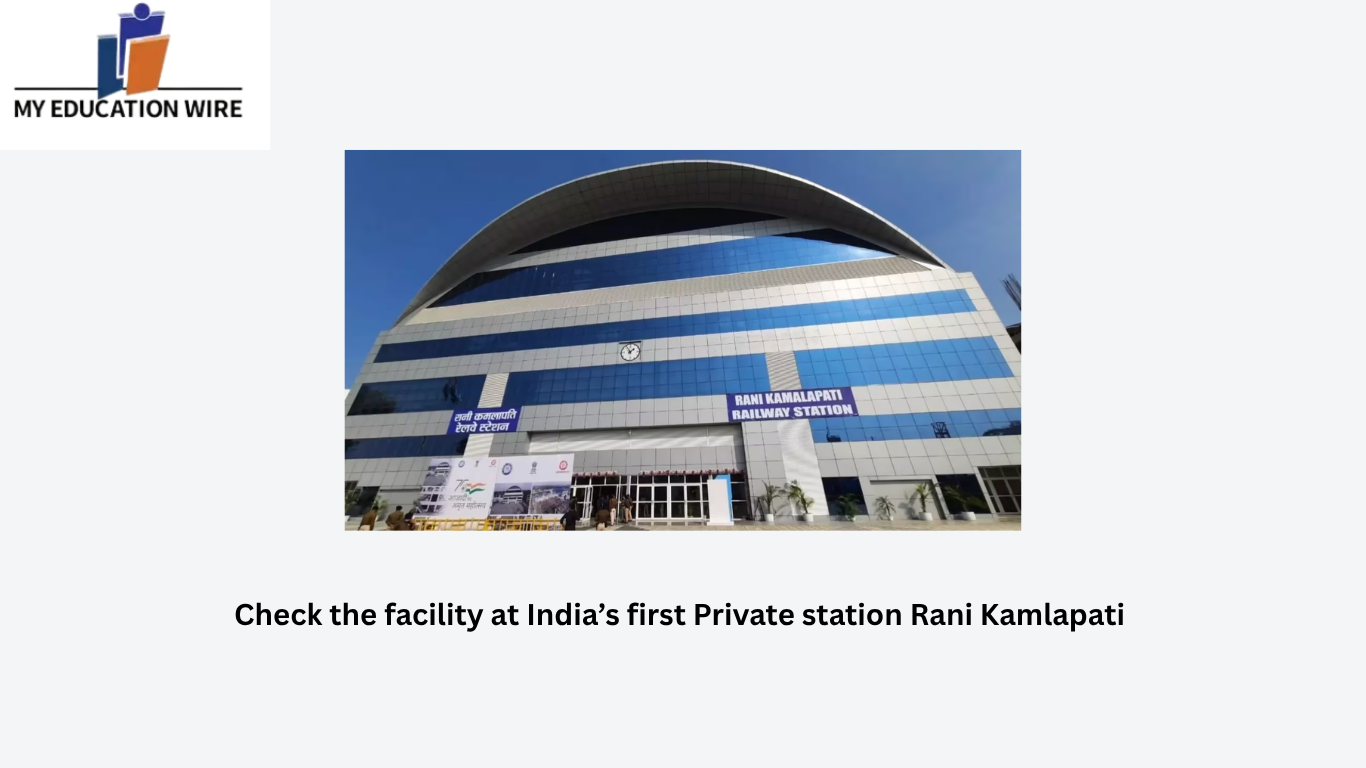Check the facility at India’s first Private station Rani Kamlapati
Yes India’s first private railway station Rani Kamlapati railway station (station code: RKMP) is a major, world-class railway station in Bhopal, Madhya Pradesh, India. Formerly known as Habibganj, it was redeveloped and renamed in November 2021 in honor of Gond queen Rani Kamlapati. Prime Minister Narendra Modi inaugurated it on 15 November 2021 and is India’s first ISO-certified, “private” railway station, operated under a public-private partnership.
Facilities:
The station features an airport-like concourse with a seating capacity of 700–1,100 people, an air-conditioned lobby, large covered parking, multiple escalators and lifts, waiting lounges, ticket counters, food courts, retail and book shops, a convention centre, a hotel, a super speciality hospital, and free Wi-Fi.
Check the facility at India’s first Private station Rani Kamlapati
Key features and details:
- Location: 16 Zone-II, Maharana Pratap Nagar, Bhopal, Madhya Pradesh (Coordinates: 23.2216°N, 77.4401°E).
- Railway Zone: West Central Railway (WCR), Bhopal Division.
- Platforms: 5.
- Elevation: 496 meters above sea level.
- Station Code: RKMP.
- Train Traffic: Over 550 trains pass through the station, making it a central hub for northern and southern India.
- Sustainability: Designed with green practices including natural lighting, solar power, rainwater harvesting, and use of recyclable materials.
- Connectivity: Acts as a secondary station to the main Bhopal Junction and is well connected to all major cities in India.
- Nearby Attractions: The station serves as a gateway to Bhopal’s historical and cultural sites such as the Jama Masjid, Bhojpur Temple, Taj-ul-Masajid, Mandideep Jain Temple, and Birla Mandir.
- Special Note: It was India’s first “private” station, redeveloped under PPP mode and modeled partly on Germany’s Heidelberg railway station.
Rani Kamlapati railway station stands out in India’s rail network for its modern architecture, passenger comforts, sustainability initiatives, and role as a model for future station upgrades


